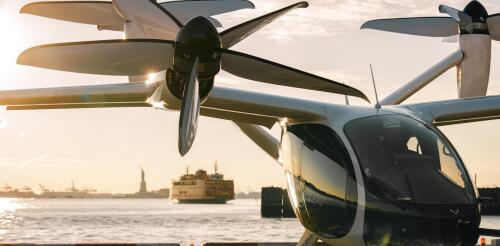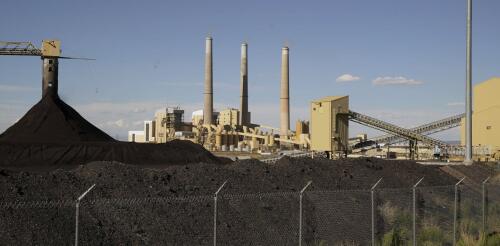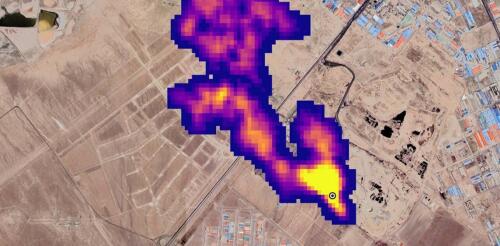environment
Imagine a future with nearly silent air taxis flying above traffic jams and navigating between skyscrapers and suburban droneports. Transportation arrives at the touch of your smartphone and with minimal environmental impact. This isn’t just science fiction. United Airlines has plans for these futuristic electric air taxis in Chicago and New York. The U.S. military is already experimenting with them. And one company has a contract to launch an air taxi service in Dubai as early as 2025. Another company hopes to defy expectations and fly participants at the 2024 Paris Olympics. Backed by billions of dollars in venture capital and established aerospace giants that include Boeing and Airbus, startups across the world such as Joby, Archer, Wisk and Lilium are spearheading this technological revolution, developing electric vertical takeoff and landing (eVTOL) aircraft that could transform the way we travel. Electric aviation promises to alleviate urban congestion, open up rur...
Electric power generation in the U.S. is shifting rapidly away from fossil fuels toward cleaner and lower-carbon sources. State clean energy targets and dramatic declines in the cost of renewable electricity are the most important reasons. But fossil fuel plants still generate 60% of the U.S. electricity supply, producing air, water and land pollutants and greenhouse gases in the process. To reduce these impacts, the Environmental Protection Agency announced a suite of rules on April 25, 2024. They focus mainly on coal plants, the nation’s most-polluting electricity source. As an environmental lawyer who has been in practice since the early 1970s, I believe these curbs on power plant pollution are long overdue. The new rules close loopholes in existing laws that have allowed coal-fired power plants to pollute the nation’s air and water for decades. And they require utilities to drastically slash these plants’ greenhouse gas emissions or close them down. Oppon...
Spring is go time for climbers who hope to summit Mount Everest, Earth’s highest peak above sea level. Hundreds of mountaineers from around the world travel to Asia in April and May, headed for base camps in Nepal and Tibet. But jagged peaks won’t be the only thing they see. Especially on Everest’s more heavily traversed Nepal side, they’ll find fields of garbage – including cans, bottles, plastic and human and animal excrement. Each year, more than 60,000 trekkers and climbers visit the Sagarmatha National Park and Buffer Zone, a high-altitude swath of the Khumbu region in northeast Nepal that includes Everest and seven other peaks. Some 400 to 500 climbers attempt to summit Everest every year. The trash problem first became evident in the 1980s and 1990s, when climbing on the mountain and trekking in Khumbu began to increase. Climber and trekker numbers have further skyrocketed in the past 20 years. Most coverage of this issue focuses on nega...
Methane, a potent greenhouse gas, is being released from landfills and oil and gas operations around the world in far larger amounts than governments realized, recent airborne and satellite surveys show. That’s a problem for the climate as well as human health. It’s also why the U.S. government has been tightening regulations on methane leaks and wasteful venting, most recently from oil and gas wells on public lands. The good news is that many of those leaks can be fixed – if they’re spotted quickly. Riley Duren, a research scientist at the University of Arizona and former NASA engineer and scientist, leads Carbon Mapper, a nonprofit that is planning a constellation of methane-monitoring satellites. Its first satellite, a partnership with NASA’s Jet Propulsion Laboratory and the Earth-imaging company Planet Labs, launches in 2024. Duren explained how new satellites are changing companies’ and governments’ ability to find and stop methan...
Curious Kids is a series for children of all ages. If you have a question you’d like an expert to answer, send it to curiouskidsus@theconversation.com. Why are some people faster than others? – Jon, age 14, Macon, Georgia Usain Bolt, the world’s fastest person, ran a 100-meter sprint at a speed of 23.35 miles per hour (37.57 kilometers per hour). That’s mind-blowingly fast for a human. It’s about the same speed as cruising in a car through your neighborhood or in a school zone. It might not seem that fast when you’re in the car, but for a person? Few runners in the world can even come close. There are several reasons why some people can run very fast while others tend to run more slowly. Genetics – the traits you inherit from your parents – play a role, but so do your choices and experiences. As pediatric exercise scientists, we create and e...




